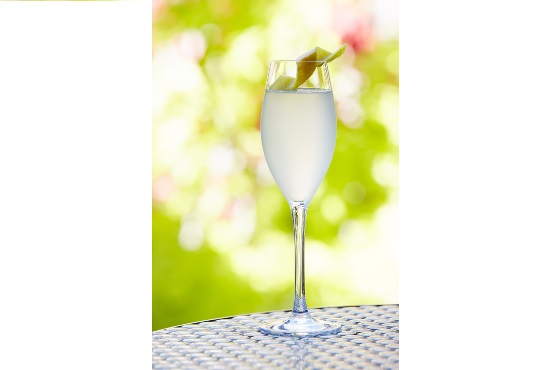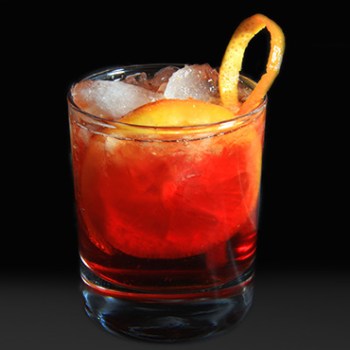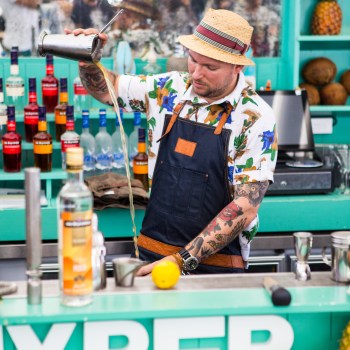What do classic aperitifs and deadly war weaponry have in common? Well, quite a lot if you’re talking about a particular well-known Champagne-based cocktail…
It’s not every day that a cocktail is created to honour the work of a machine of mass destruction, however that certainly is the case when it comes to the French 75. Created in the wake of World War I, the citrus, gin and Champagne concoction honours the French-made canon de 75 modèle 1897, also known as the 75mm Howitzer. The powerful 75mm field gun was said to have been impressive in the way it could cut through a line of troops with ruthless, deadly efficiency. So, obviously it was the perfect name for a well-balanced and elegant aperitif cocktail.
According to cocktail legend, the name was thought to be appropriate for the fact that the drink doesn’t look terribly dangerous – with its citrus twist, presented in a Champagne flute – but it delivers a pretty powerful kick. Something akin to being shelled by one of the aforementioned rapid-fire weapons, perhaps.
While the French 75 is perhaps a less well-known Champagne cocktail than the Bellini, it is just as refreshing, a lot more deadly, and perfect for summer cocktail menus.
BORN IN THE ROARING 20S (PERHAPS)
As with most classic cocktails, the origins of the French 75 are shrouded in mystery and it was probably a confluence of events that led to its creation.
What we do know, is that the recipe and the name were first used together in the 1920s, though similar drinks can be tracked to before that time.
While the French 75 is often regarded as the only classic to have been birthed during the Prohibition period, there are a few problems with the chronology of this version of the story. According to what cocktail history geek David Wondrich wrote for Liquor.com back in 2012, the history of the recipe can be traced back to Charles Dickens’ visit to Boston in 1867. According to an 1885 article about the Parker House hotel, the famed author liked to entertain the “literary lions” of the town with “Tom gin and champagne cups”. Wondrich clarifies that a Champagne Cup is “bubbly, sugar, citrus and ice” – and with gin added you have pretty much got yourself a French 75.
So, really, the “creator” of the French 75 didn’t actually make a new cocktail, they simply appropriated it and gave it a new name. However, as Wondrich points out, the only thing that matters, is that once the combination of gin, Champagne, lemon and sugar became associated with the highly symbolic weapon it gained a new cachet, with novelist Alec Waugh calling it, “the most powerful drink in the world”.
It also should be noted that the French 75 bears no small resemblance to that most classic of cocktails – the Tom Collins. Simply replace the carbonated water with Champagne and you’re in business. Indeed, according to the recipe in Harry MacElhone’s book Harry’s ABC of Mixing Cocktails, a French 75 is supposed to be served in a highball glass – not the Champagne flute it is currently served in. His notation would then put weight behind the theory that an effort to make the Tom Collins, served in a highball glass, even boozier played a part in the origins of the French 75.
It should also be noted that the accepted origin legend of the French 75 has it that the drink was created by MacElhone at his namesake bar – Harry’s American Bar – in Paris in the 1920s. However, as Simon Difford notes in his Cocktails: The Bartender’s Bible, MacElhone credits someone else entirely in his own, aforementioned, cocktail tome. According to the Scotsman it was invented by a bloke who went by the name Macgarry and worked at the Buck’s Club in London.
And in fact, it has been noted that in MacElhone’s ABC of Mixing Cocktails, the 1922 edition, a French 75 involved a combination of Calvados, gin, grenadine, and absinthe.
Regardless, the recipe as we know it made an appearance in The Savoy Cocktail Book in 1930 and remained a popular choice with fashionable drinkers well into the 50s. There is also some confusion as to whether the original recipe was supposed to involve Cognac instead of gin, which is the case in The Fine Art of Mixing Drinks by David Embury. And that brings us nicely to the next point.
SO WHAT DO YOU MAKE IT WITH?
The simple elegance of the French 75 is hard to argue against – which is why it is a classic if we’re totally honest – with the combination of quality dry gin, classic French Champagne, fresh squeezed lemon juice and a hint of sugar creating a killer combination. The drink is almost greater than the sum of its parts, with the ingredients complementing each other rather than one standing out above the others.
That said, as mentioned previously, later variations of the French 75 recipe use Cognac instead of gin – despite some people claiming it was actually the original spirit used in the cocktail – and it is easy to see why. The Cognac adds a level of complexity to the cocktail that would not have been easy to achieve with gin back in the day. Though perhaps we could hazard that with the rich variety of gins currently available on back bars there is plenty of space to create flavour variations without subbing in Cognac.
For those looking to create something even more decadent – and perhaps the Silly Season is just the right time for it – the example to follow is that of Restaurant R’evolution in New Orleans. Apart from neighbouring the historic Arnaud’s French 75 bar in the French Quarter, the venue serves the classic with a choice of top shelf Champagnes, depending on the particular flavour the customer is after. Apparently the Dom Perignon 2000 offers a “toasty, warm brioche” result, the Taittinger Comtes de Champagne 2004 plays well with the lemon juice for “citrus layers” and the non-vintage Bourgeois-Diaz provides a more wallet friendly alternative.
RECIPE
Glass: Champagne flute
Ingredients:
• 45ml London Dry Gin
• 15ml Fresh lemon juice
• 8ml Sugar syrup
• Champagne
Method: Shake the first three ingredients and strain into a chilled glass. Top with champagne, garnish and serve.
Garnish: Lemon twist



